Whether you are planning to haul a heavy load of pipe or are designing a support system, understanding the weight of galvanized pipe is very important. Whatever your reason, you are wondering how much both steel and iron galvanized pipe weighs. For this post, we gathered up-to-date research to answer your question thoroughly.
To calculate pipe weight, you need three of the following dimensions: the inside diameter, the outside diameter, the wall thickness, and the length. Also, you need the density of the material in question. You can add 4% to 8% of the initial weight for galvanized pipe to find the total weight. Generally, there are three mains ways to use the above information to calculate pipe weight:
- Use the pipe weight equation
- Use a pipe weight chart
- Use an online calculation tool
Keep reading the rest of this post for details on calculating the weight of steel and iron galvanized pipes. This guide includes all you need to know to get a very good estimate of total pipe weight by length. To conclude, we answer a few related questions.
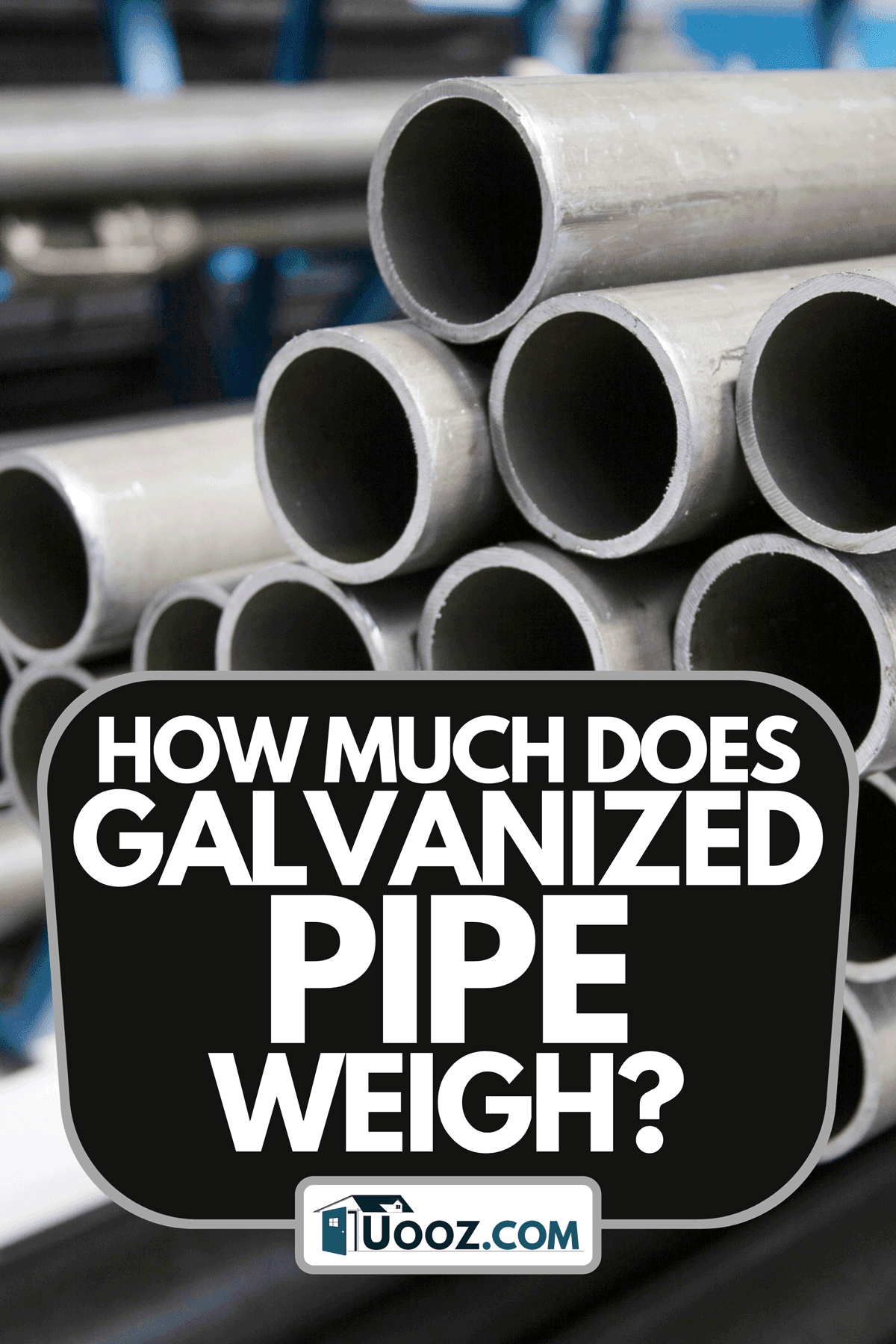
Pipe Size and Schedule
In the United States, pipes are generally measured in Nominal Pipe Size, which is commonly abbreviated as NPS, and the pipe schedule. The NPS and pipe schedule combined will tell you the inside and outside diameter and the wall thickness.
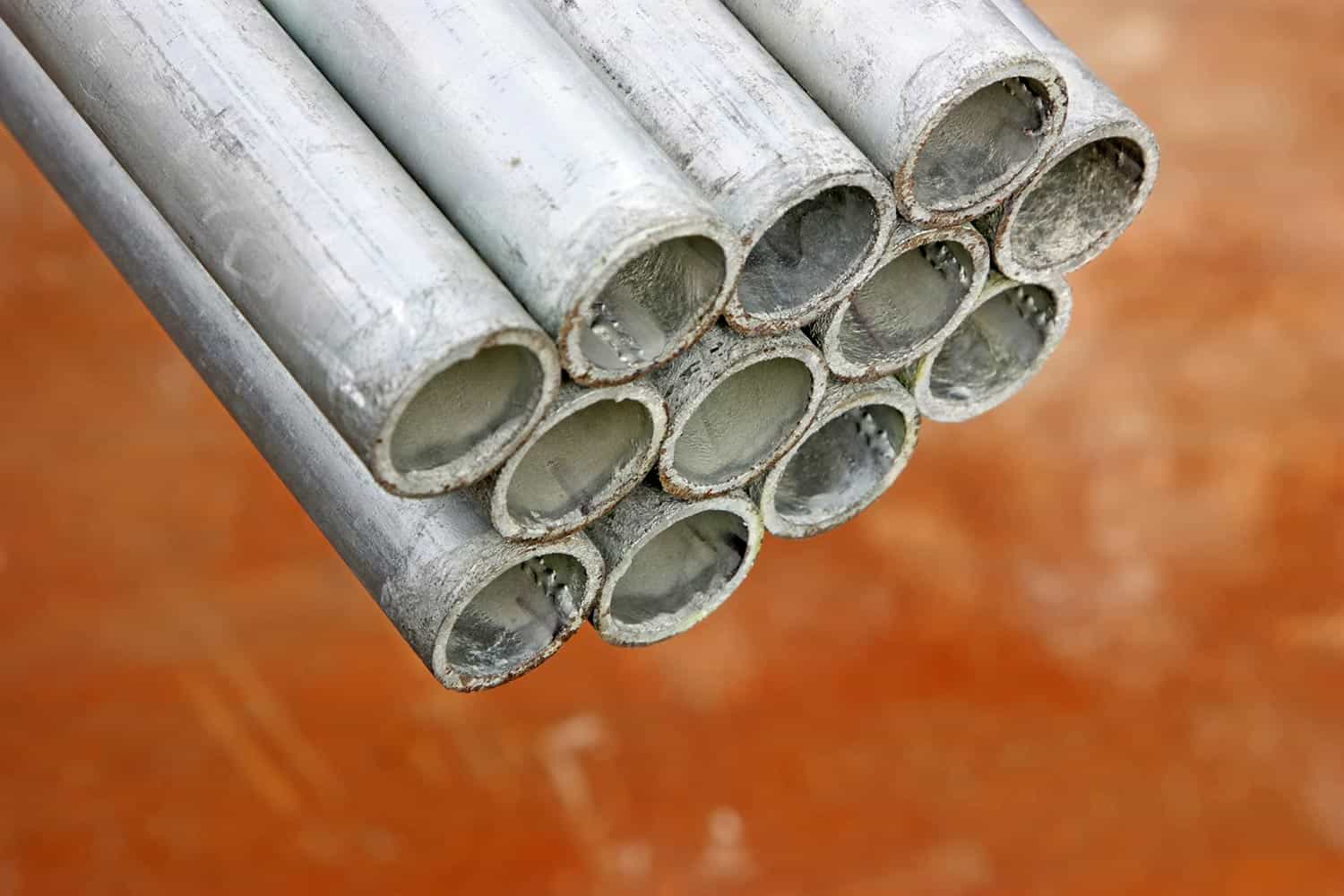
For instance, a pipe with an NPS of 3/8 and a schedule of 5 has an outside diameter of .675-inches and a wall thickness of 0.065-inches. To determine these values requires looking up a pipe standard chart. These are easily accessible online and at retail pipe establishments.
Because this article deals with galvanized pipe, simply measuring the pipe yourself will give inaccurate numbers. This is because of the additional metal added by galvanization. Therefore, be sure to use the pipe NPS number and schedule when performing the following calculations.
Pipe Weight Equations
The following sub-sections give the simplified pipe weight equation for steel and iron and a more complicated equation that works for all pipe metal types.
What is the pipe weight calculation?
Once you have determined your pipe's inside diameter and wall thickness, you can use the pipe weight calculation reproduced below. According to this article by the National Association of Pipe Distributors, the equation is as follows for steel:
Pounds per Foot = 10.69 x (Outer Diameter in Inches - Wall Thickness in Inches) x Wall Thickness in Inches
The constant of 10.69 accounts for the density of steel per cubic foot. Fortunately, according to this chart, both steel and iron have the same density of 490 pounds per cubic foot. This means the above equation will work for both iron and steel.
Once you have the pounds per foot value calculated, you can then multiply that number by the total number of feet of pipe in question to get a final total in pounds.
A Note on Metal Density
Depending on how accurate you want your pounds per foot value to be, you may want to use a more complicated equation that allows you to account for different metal densities.
This variability in density is well displayed in this chart from the Engineering toolbox. It shows that while basic iron and steel both have a density of 490 pounds per cubic foot, these metals vary in density depending on their origin.

For instance, stainless steel's density ranges from 467 to 499 pounds per cubic foot, and cast iron ranges from 425 to 487 pounds per cubic foot. This means that the above-simplified equation only works for certain types of iron and steel.
Use the following more complicated equation from this article from the Engineering Toolbox to account for more specific metal densities:
Pounds per Foot = ((π/4) x (Density in Pounds per Cubic Inch) x ((Outside Diameter in Inches)2 - (Inside Diameter in Inches)2))*12
To use this equation, convert pounds per cubic foot to pounds per cubic inch by dividing pounds per cubic foot by 1728. So 490 pounds per cubic foot equals 0.28 pounds per cubic inch.
For general purposes, using the simplified equation will produce a result that is almost always accurate enough for the task at hand. Further, since that first equation uses the density of 490 pounds per cubic foot, it will produce a value on the high end of the possible range.
Pipe Weight Charts
This chart-based technique for calculating pipe weight by foot certainly requires a little less math. All you need to do is google pipe weight charts and then find one that appears to be from a reputable source.
Now locate the NPS and schedule of the pipe in question. Right on that chart should be a weight per foot value that you can use to get the total weight.
Be careful. These charts are usually specific to a certain metal but do generally work for both steel and iron. To double-check the chart you are using, confirm the value across several sources.
Internet Pipe Weight Calculators
The final way to calculate pipe weight involves using premade pipe weight calculators. These tools take the inputs and math from the first section and automatically produce a value. All you have to do is accurately fill out the blank fields.
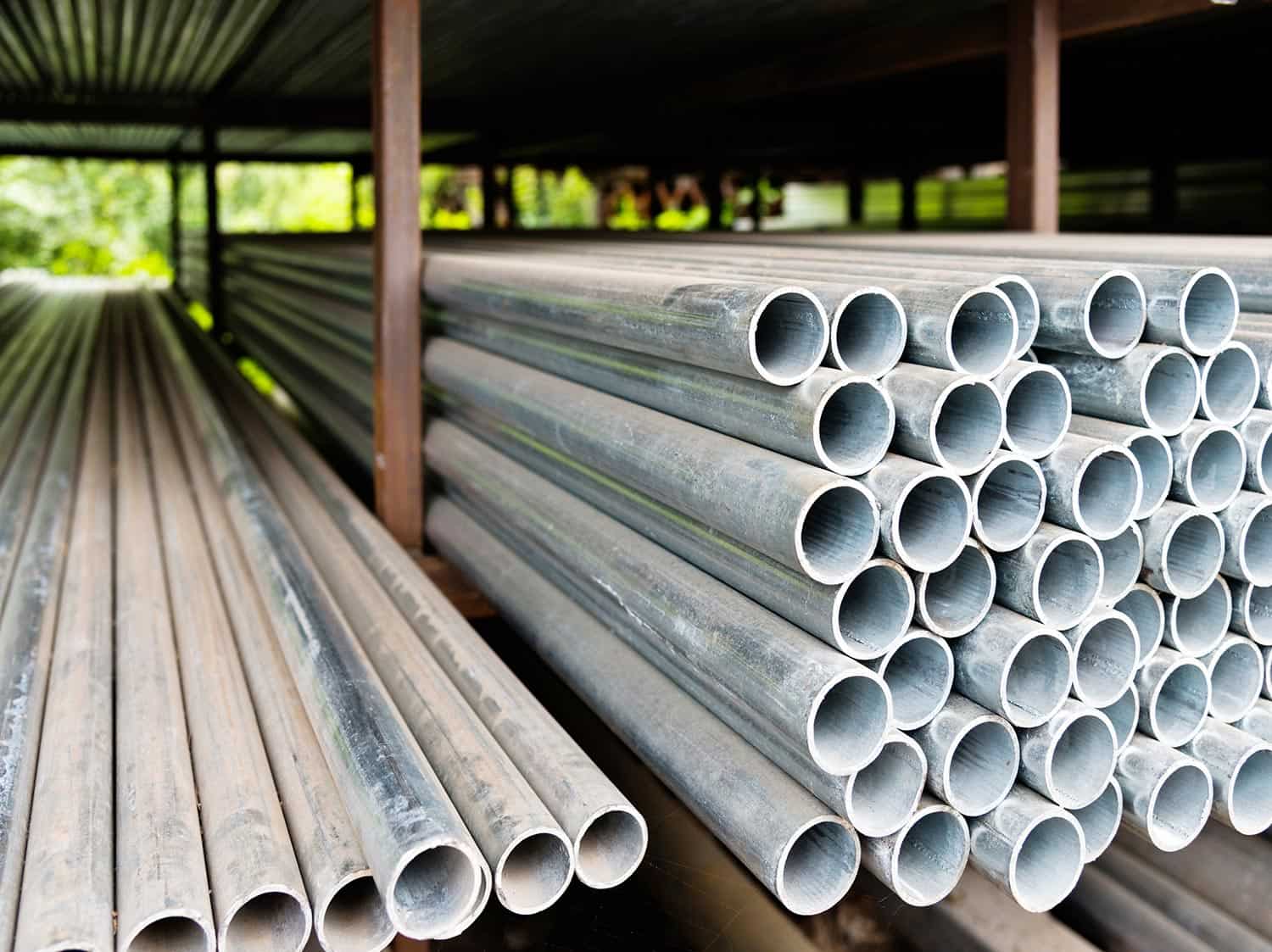
A simple google search finds these calculators. Be sure that you input the proper diameter and wall thickness as asked and that the calculator is for the proper metal. Sometimes, the calculators ask for density and total pipe length, producing a more precise final answer.
Either way, double-check your calculator by putting the same information in a few different places. If you get a consistent final answer, you should be reasonably confident in the output weight.
Does galvanizing add weight?
Yes, galvanization does add weight to your pipes. This process adds a zinc metal coating to the outside of the pipe. Depending on the exact makeup of the metal, this coating can be between 3 mils and 7 mils in thickness.
Since this additional metal does add weight, getting accurate values for galvanized pipe requires accounting for that coating.
Accounting for Galvanization
According to the American Galvanizers Association, galvanization adds 1% to 15% to the total weight of steel and iron materials. Other sources indicate that generally, pipes gain a 4% to 8% increase in weight after galvanization.
This means that to calculate the final weight of your galvanized pipe, first find the total weight without galvanization. Now, multiple that number by 1.08 to get a final weight that accounts for galvanization.
By assuming an 8% weight increase, this advice errs on the side of too heavy rather than not heavy enough.
How do you tell if a pipe is galvanized or cast iron?
Galvanization is shiny and silver-colored. Looking for this tell-tale sheen is the easiest way to identify if a pipe is galvanized or not.
On the other hand, cast iron has a blackish dark color that only is silver if freshly scratched. If you are unsure, compare your pipe to galvanized and cast iron pipe pictures through a simple online internet search.
Is galvanized steel rust proof?
Galvanization adds corrosion resistance to steel. However, no rust resistance technology is one-hundred percent foolproof.
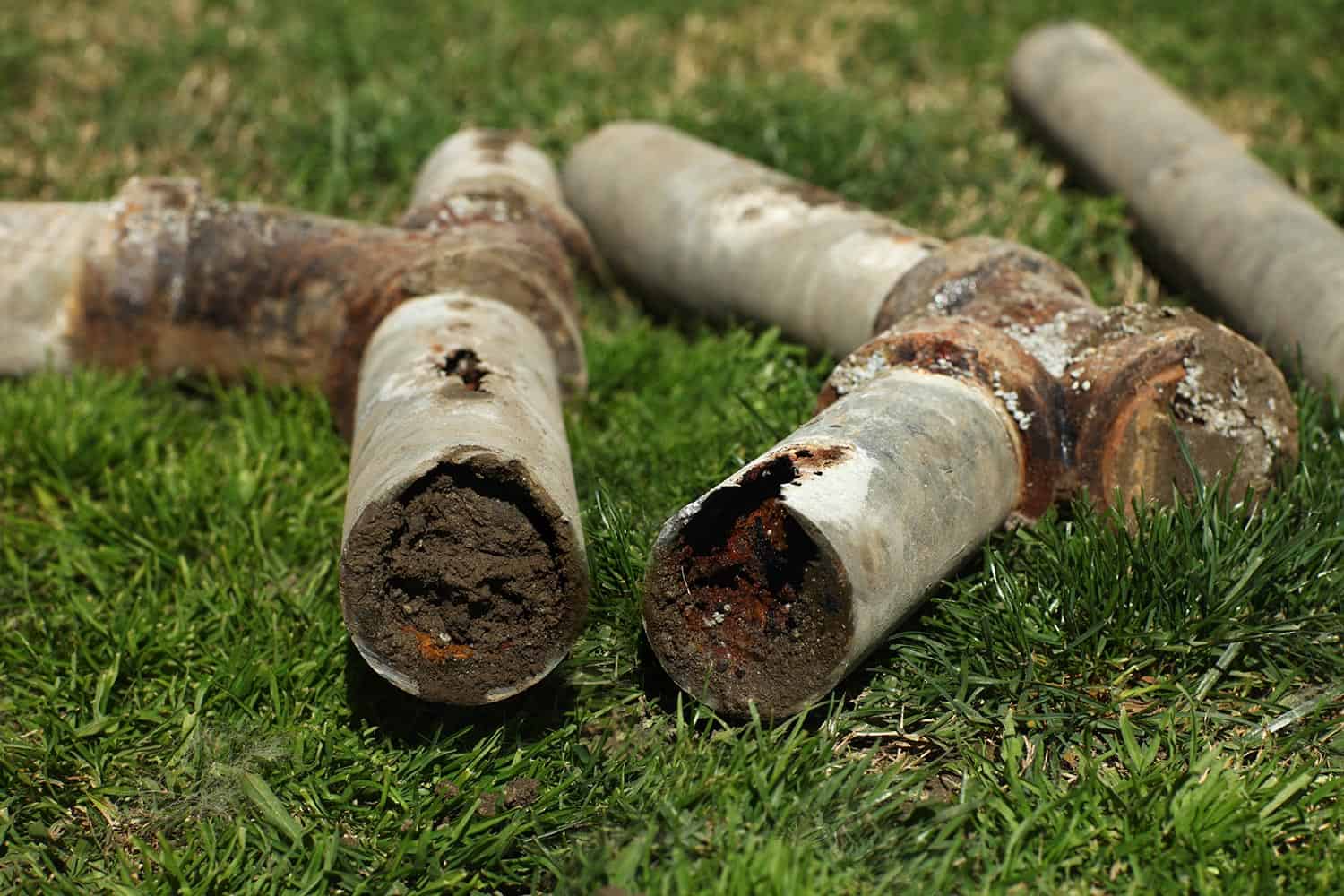
That is to say, even though galvanized steel will not rust immediately. Eventually, the galvanization will wear away. This is caused by water and air movement. This is a particular concern for the inside or outside of our pipes exposed to salty or otherwise charged water.
When that galvanization wears away, the steel will start to rust. Depending on the application, galvanization may last more than long enough. Be sure to do your research before simply assuming that galvanized steel is the perfect material for the job.
What can galvanized pipe be used for?
Galvanized pipe is most often used to supply water from one location to another. This use can be found both in supply lines and in waste lines in living and working areas. In addition, the pipe can also be used to carry water to irrigation and other industrial purposes.
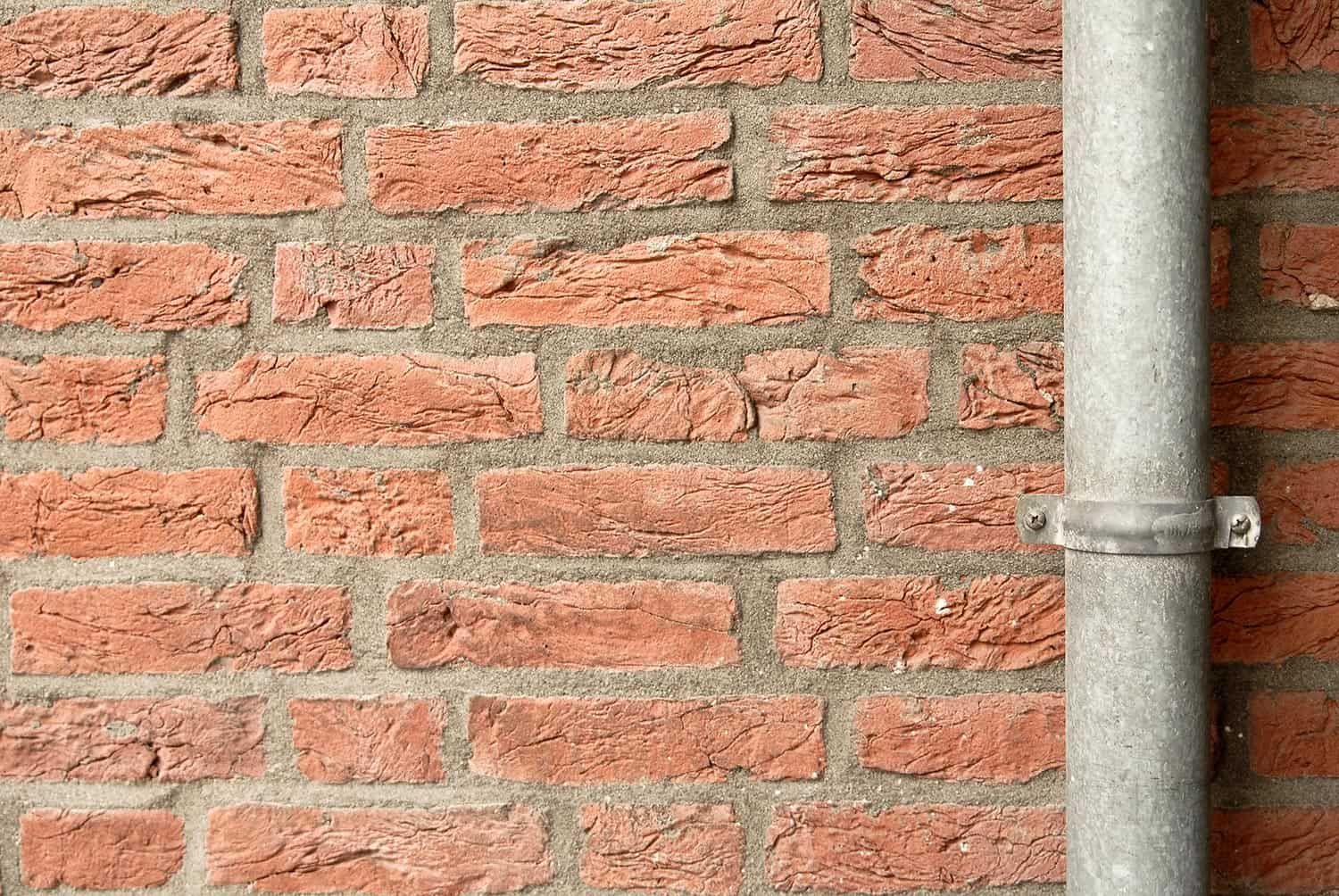
Be cautious, a galvanized pipe will eventually rust in the middle so does not make the most sense for many water movement application.
Also, galvanized pipe makes a good construction material for projects that will see a lot of weather. This includes fencing, scaffolding, and gutter systems.
In Closing
In this post, we answered how to calculate the weight of steel and iron galvanized pipes. The response includes three different ways to reach the weight and how best to account for galvanization. To conclude, we answered a few related questions. Good luck!
Uooz.com has a long list of helpful articles on galvanized pipes. To learn more, check out these great posts:
